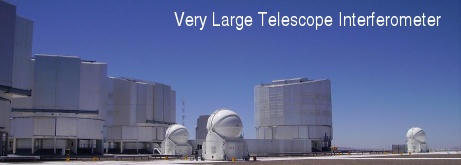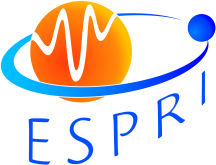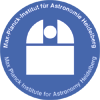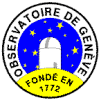|
|
ESPRI science goals
|
To date, nearly 1000 stars are known to have planetary-mass
companions (see the
Extrasolar Planet Encyclopedia). Almost all of them are solar-type
main-sequence stars, i.e., their spectral types, stellar masses, and ages
are comparable to that of the Sun, which is the result of a biased sample
selection for radial-velocity surveys caused by the applicability of this
method. In order to explore the diversity of planet-bearing stars and to
overcome the limitations of the radial-velocity method, which measures
only one dimension of the stellar reflex motion and provides only a lower
limit to the planet masses, existing search programs have to be
complemented and extended by other detection techniques.
Precise astrometry is a powerful tool for detecting planetary
companions around stars of different mass (spectral type) and age and for
measuring their orbits and masses. The VLTI instrument PRIMA (Phase
Referenced Imaging and Microarcsecond Astrometry), when equipped with
Differential Delay Lines, will perform high-precision astrometry at the 10
micro arcsecond level, and will be capable of detecting Saturn-mass
planets around nearby main sequence stars of any spectral type (down to
Uranus-mass planets around nearby M dwarfs) as well as around pre-main
sequence stars, which are not suitable for the radial-velocity method. At
a distance of 10 parsec, a Saturn-mass planet at 1 AU from the parent star
of M = 0.5 Msun produces an astrometric signal of ~50 micro arcsec.
The MPIA, Geneva Observatory and Landessternwarte, ZAH (Zentrum
für Astronomie) have agreed with ESO to build and deliver the Differential Delay Lines, data reduction software and observing strategies for PRIMA, and then to carry
out a planet search program, called Exoplanet Search with PRIMA
(ESPRI). |
|
Interferometric phase-referenced (i.e., differential) astrometry relies
on a secondary star very close to the target star. The actual target of
an astrometric measurement is therefore always a pair (or triple),
consisting of the usually bright exoplanet target star (the primary star,
which will be used for fringe tracking) and one or more fainter
astrometric reference stars (secondary stars).
Both primary and secondary star have to fulfill stringent requirements
on separation, limiting magnitude, distance, astrometric stability,
physical stellar parameters, and K-band color index difference (for OPD
corrections), as described on the Method
webpage.
Therefore, extensive preparatory studies have to be carried out to
select and characterize well-suited target/reference star pairs, before
astrometric measurements at the unprecedented accuracy of 10 micro arcsec
can be performed. In particular, no existing catalogs or data
compilations can provide the information required to ensure astrometric
stability of the target/reference star pairs at the 10 micro arcsec
level.
|

Figure 1 — an example target candidate for PRIMA. This
target has three possible astrometric reference stars. In a PRIMA
observation, the motion of the target star will be compared to that of the
nearby reference stars over a period of several years. Exoplanets around
the target star can then be detected from the reflex motion of the target
star.
|
|
Besides a general (but precise) characterization of the planet search
target stars, it is important to collect information on, e.g.,
stellar/substellar companions, stellar activity (star spots, pulsation,
etc), of both target and reference stars. In addition to investigating
all terrestrial and instrumental effects and requirements, the PRIMA-DDL
astrometric planet search science team is therefore carrying out an
extensive preparatory program which consists of five principal steps:
| 1. |
Pre-selection of potential target/reference star pairs from existing
catalogs according to a well-defined set of pre-selection criteria.
In most cases, potential reference stars (for K-band astrometry)
can only be pre-selected from surveys at visible wavelengths.
|
| 2. |
Modeling all sources of systematic and random astrometric effects
and explore the parameter space for suitable target/reference star pairs
and necessary preparatory observations
(thereby using the experience from the SIM preparatory program).
|
| 3. |
K-band photometric imaging to finally select and characterize
target and reference star pairs according to actual brightness and separation
requirements for K-band astrometry.
|
| 4. |
Detailed (mainly spectroscopic) study of all target and reference stars
pre-selected until step 3 and fully characterize all relevant stellar
parameters and the expected astrometric noise.
|
| 5. |
Build up a data base for the astrometric planet search program.
|
We have categorized our target stars for ESPRI into the following groups:
| a. |
Stars with planets from the radial velocity surveys.
The precise astrometric measurement of the host star will allow
the characterization of the planetary system.
In particular, it allows to obtain the real mass of the planet.
Moreover, the astrometric method is complementary to the radial velocity survey,
since it is more suitable for the detection of the longer-period
planets.
|
| b. |
Young stars.
The majority of young stars possess high-level stellar activity,
which renders them inappropriate for the radial velocity planet
search programs. For the active young stars precise astrometry is
indeed more effective than the radial velocity method. The
astrometric noise due to the stellar activity (spots, pulsations) can
be of few micro- to milliarcseconds (Launhardt et al., in
preparation). Precise astrometry will allow planet searches around
young stars to address the questions of formation and early evolution of planetary
systems.
|
| c. |
Nearby stars.
Astrometric planet searches around these stars are complementary to radial velocity surveys
concerning sensitivity and spectral types, especially for those which are not (or only
very limitedly) covered by the radial velocity surveys, such as A- , early F-type and low-mass stars. |
Following the strategy for the preparation of the astrometric planet
search program we have started an extensive spectroscopic study of the
target star candidates with FEROS at the 2.2m MPI/ESO within the MPI
guaranteed time (step 4). From the spectroscopic measurements we determine
the basic stellar parameters of the targets. For many stars in the input
catalogs, especially for young stars, these parameters or there is no sufficient information at all. Radial
velocity measurements have been carried out to exclude the spectroscopic
binaries from our sample. These objects are not suitable for
astrometric planet searches, because they can produce large astrometric
noise.
For the last step in the preparatory program we are currently building
a target-reference star database (step 5), called ASTRID. Further
details are given on the software webpage.
|
|
|











